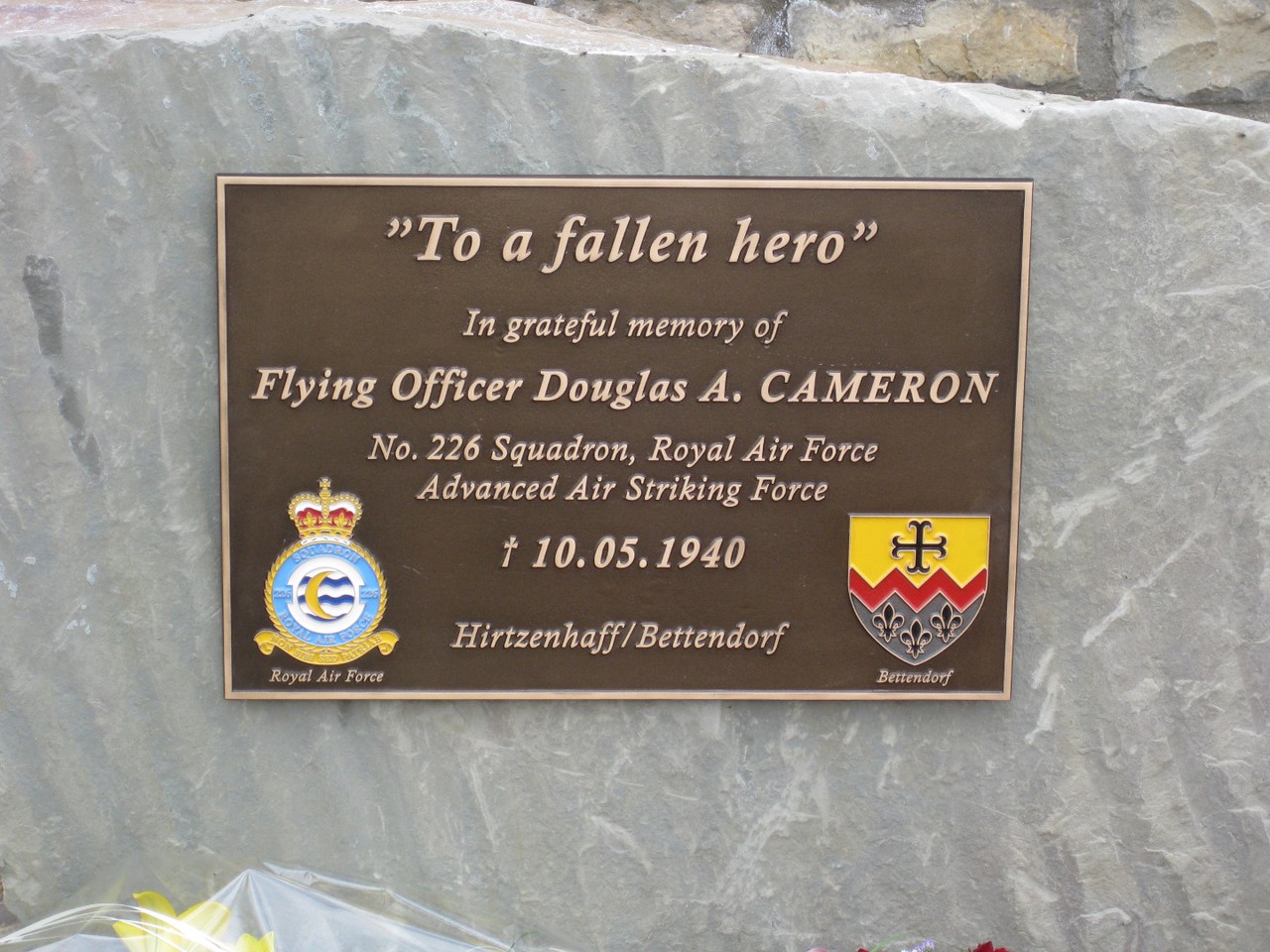Marscherwald
Luksemburg
Oznacz
Plan
Udostępnij
Trasa
As there were no British ground troops fighting in Luxembourg during the Battle of the Bulge, the RAF memorials in Luxembourg such as the Halifax Memorial ‘Marscherwald’ indirectly pay tribute to the UK, the British armed forces and nation as key allies during the Second World War contributing to victory. It was the RAF that primarily gave hope to the oppressed Luxembourg nation during the earlier war years and prior to the Liberation of Luxembourg in 1944 to 1945 by US forces.
The Halifax MKII bomber with the serial number JD-298 flew out of RAF Lissett, Yorkshire on 27 August 1943 around 21:00. The target, to bomb the industrial town of Nürnberg. Flying over the channel, it continued over Belgium and Luxembourg before penetrating into German mainland airspace near Schengen.
Soon, the Halifax was discovered by a German Messerschmidt Me110 night fighter. This was piloted by Helmut Bergmann of night fighter squadron 4, taking off from Metz, France. They intercepted and engaged the RAF aircraft. It was hit on its right fuselage side and the fuel tank immediately caught fire.
Crew mechanic George Rippingale and tail gunner John Thomas were killed immediately. The pilot was still able to manoeuvre the damaged Halifax back towards Luxembourg territory in direction of Bech and Junglinster. Pilot Officer (Plt Off) Clarke ordered his crew to bail out with the parachutes.
Four crewmembers were able to land safely. Plt Off Clarke was also able to bail out. He parachuted, landing too close to the burning plane which had crashed and exploded at the ‘Marscherwald’. He would die next to his downed aircraft.
Of the four crewmembers who survived the crash, three were collected and hidden by Luxembourg patriots and were able to be exfiltrated weeks later to eventually regain the UK. The fourth crewmember was captured and imprisoned in a POW camp, Stalag IV-B at Mühlberg/Elbe.
Adres
Graulinster(Bech), Luxembourg






